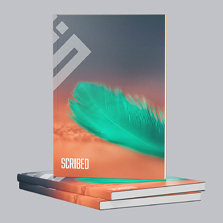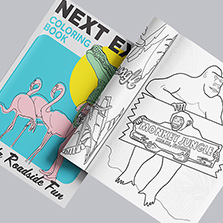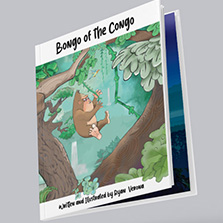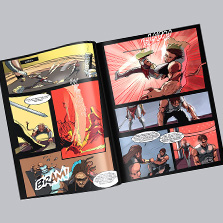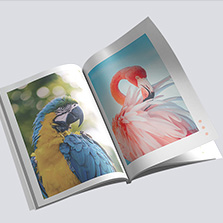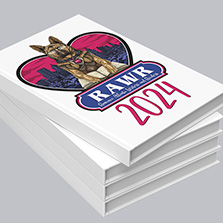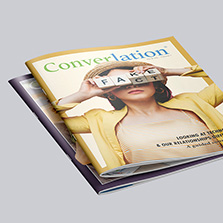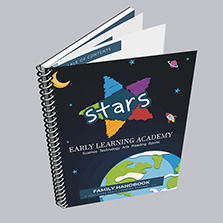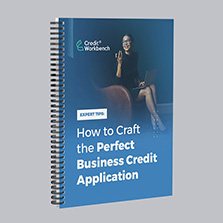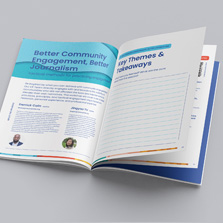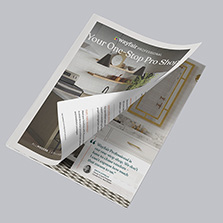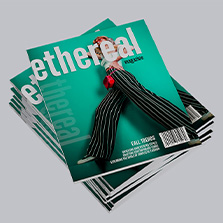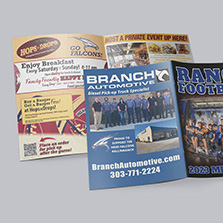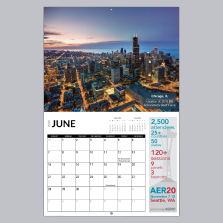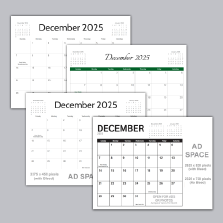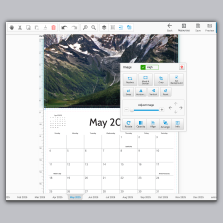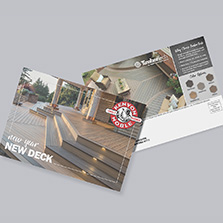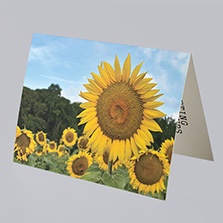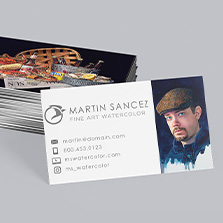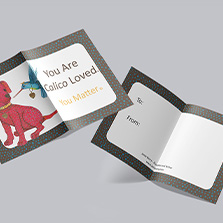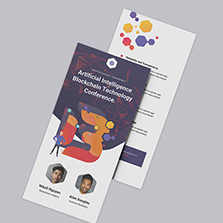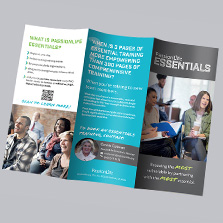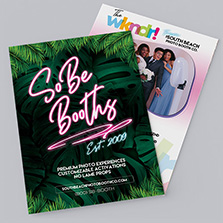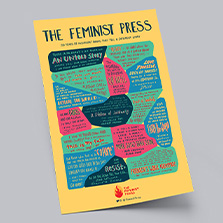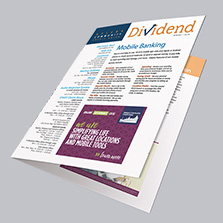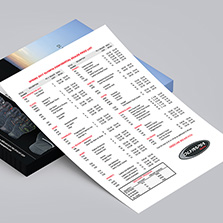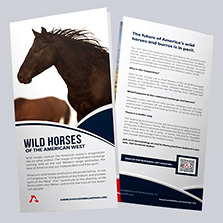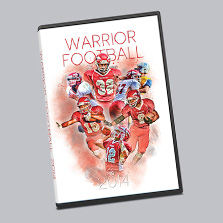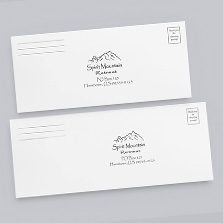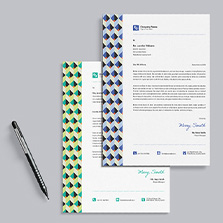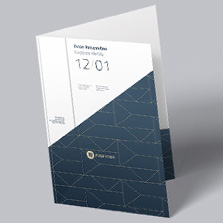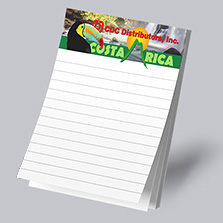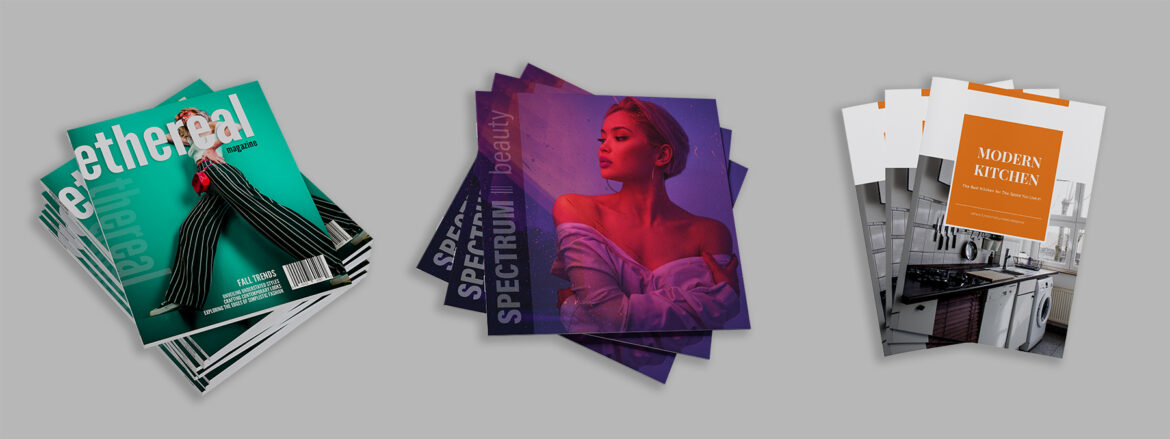
The Ultimate Print Marketing Guide
Is print marketing a nostalgic remnant, or does it hold a secret power in today’s digital marketplace?
In an era where digital ads flash before our eyes and disappear in a click, the enduring charm of print marketing poses a thought-provoking contrast. It’s more than just paper and ink; it’s a tactile experience that digital content can’t replicate. This guide will highlight how print marketing continues to captivate and influence audiences in ways that complement and often enhance digital media.
We’ll showcase how print’s unique ability to engage the senses can create a deeper brand connection and why top marketers still bank on its unspoken power. Prepare to be surprised as we reveal how PrintingCenterUSA brings this classic medium to life, blending tradition with innovation to make each printed piece a memorable part of your marketing mosaic.
Now, let’s flip the page.

What is Print Marketing?
Print marketing is the use of physically printed media to promote products, services, or brands. This time-tested method includes various forms such as flyers, booklets, brochures, postcards, calendars, and more. Unlike digital marketing, print materials provide a tangible way to engage with your audience, often leading to a deeper connection and longer-lasting impact.
Despite the digital age, 56% of consumers find print marketing to be the most trustworthy type of marketing, as reported by MarketingProfs.
Why Print Marketing Still Works
Print marketing retains its edge due to its tangible nature and the trust it commands. Research has consistently shown that consumers are more engaged when reading printed material as opposed to digital content. For example, a study by the Data & Marketing Association highlighted that direct mail enjoys a higher response rate than email, with tangible marketing pieces often yielding a more memorable and lasting impact.
Moreover, print marketing is inherently trustworthy. According to MarketingSherpa, consumers trust print ads more than online ads when making purchase decisions. This trust factor, combined with the physical presence of print materials, creates a powerful tool for building brand credibility. Unlike fleeting digital ads, print materials like brochures, flyers, and catalogs have a staying power in homes and offices, offering repeated exposure and reinforcing brand messaging over time.
The effectiveness of print marketing lies in its ability to cut through the digital noise and provide a different, more focused user experience. By engaging the senses, print materials create a deeper connection with the audience, making them an essential part of a balanced and comprehensive marketing strategy.
According to a study by the Data & Marketing Association, direct mail has a response rate of up to 9% for house lists and 5% for prospect lists, significantly higher than the average email response rate of just about 1%
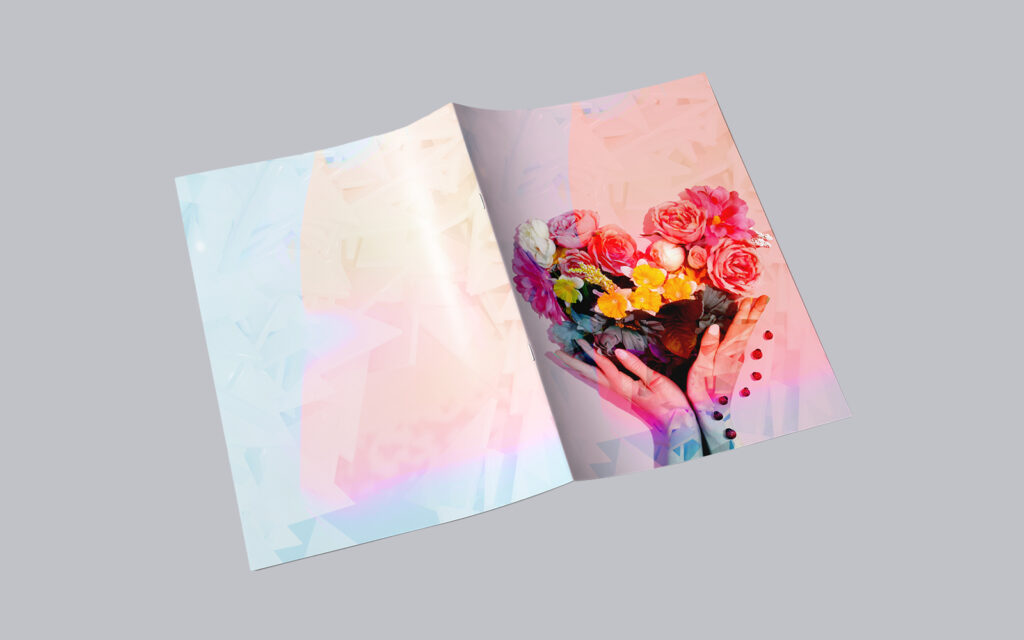
How to do Print Media Marketing
Not sure where to start?
Successful print media marketing involves a strategic approach. Here’s some tips to help you get started:
1. DEFINE Your Audience
- Identify the Target Group: Begin by understanding who your target audience is. Consider factors like age, gender, location, interests, and income level. This information will guide the tone, content, and design of your print materials.
- Understand Their Needs and Preferences: Determine what your audience values and what problems they might face that your product or service can solve. This insight allows for more resonant and effective messaging.
2. Design for IMPACT
- Visual Appeal: The design of your print materials is crucial. It should grab attention and make a lasting impression. Use high-quality images, eye-catching colors, and readable fonts.
- Brand Consistency: Ensure that your designs are consistent with your brand identity. This includes your logo, color scheme, and overall brand style, creating a cohesive and professional look.
- Professional Touch: If possible, use professional design services. Designers can help bring your ideas to life while ensuring that the materials are polished and effective.
3. Craft Your MESSAGE
- Clear and Concise: Your message should be straightforward and easy to understand. Avoid cluttering with too much text or complex jargon.
- Emphasize Benefits: Focus on how your product or service can benefit the customer rather than just listing features.
- Call to Action: Include a clear call to action (CTA) that guides the reader on what to do next – whether it’s visiting a website, making a call, or visiting a store.
4. CHOOSE the Right Materials
- Select the Appropriate Format: Different messages and audiences may require different print formats. For example, a detailed product catalog might be best for a B2B audience, while a colorful flyer could be more effective for a local event promotion.
- Quality Matters: The quality of the paper and printing can make a significant difference. High-quality materials reflect positively on your brand and can influence the perceived value of your product or service.
- Not sure what paper to choose? Order a Free Sample Kit today! Your Complete Print Marketing Toolkit comes with a full Paper Swatch Book displaying all our available papers in different weights and coatings side by side. Choosing the right paper has never been easier!
5. Distribute STRATEGICALLY
- Identify Distribution Channels: Choose the right channels to reach your audience. This could include mail campaigns, distribution at events, in-store displays, or partnerships with other businesses.
- Timing is Key: Consider the timing of your distribution. Aligning the distribution of print materials with related events, seasons, or holidays can increase their relevance and impact.
- Track and Adjust: Monitor the response to your print marketing efforts. Tracking tools like QR codes or unique URLs can help gauge effectiveness. Use this data to refine your strategy and improve future campaigns. Research shows that enhancing print materials with digital elements, like QR codes, can increase customer engagement.

What is an Example of Print Media Marketing?
Consider a boutique coffee shop that introduces a new line of gourmet pastries. To spread the word, they design an eye-catching booklet that intertwines the story of their culinary journey with vivid photographs of the pastries. Each page highlights a different pastry, detailing the unique ingredients and the chef’s inspiration behind them. As a special touch, the booklet includes discount coupons for first-time buyers.
These booklets are strategically placed at every table in the coffee shop and distributed in local lifestyle magazines. To reach a wider audience, the coffee shop also collaborates with nearby bookstores and libraries for display at their counters. This multifaceted approach not only elevates the visibility of their new product line but also creates an engaging narrative around their brand. The result is an increase in foot traffic, boosted sales of the new pastries, and heightened interest in the coffee shop’s overall offerings, showcasing the power of well-executed print media marketing.
What are 7 Examples of Print Media?
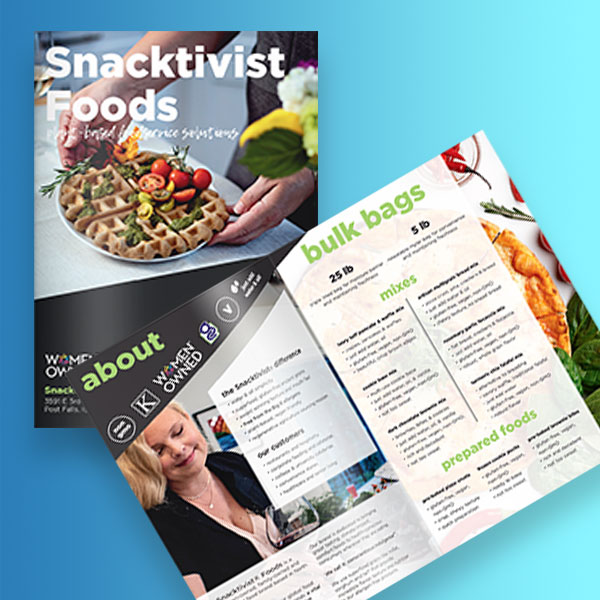
Brochures are versatile pieces of print media and they are perfect for delivering detailed information about your products or services in a concise format. They can be designed in various folds (like tri-fold or bi-fold) and sizes, allowing for creative layouts and ample space for engaging content and images. Brochures are ideal for handouts at trade shows, as information packets, or as mailers.

Booklets are impactful print marketing tools, ideal for presenting detailed information in an organized and reader-friendly format. They are perfect for product guides, company portfolios, event programs, or educational materials. The versatility of booklets allows businesses to convey a story or process in a way that’s more comprehensive than a flyer or brochure.
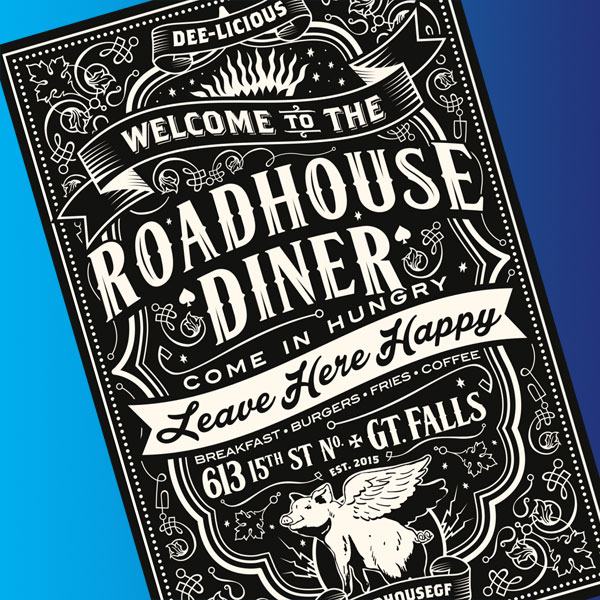
Posters are an excellent tool for attracting attention in public spaces. They are usually larger in size, making them perfect for advertising events, products, or services. A well-designed poster with compelling visuals and a clear message can be highly effective in high-traffic areas or as point-of-sale displays.
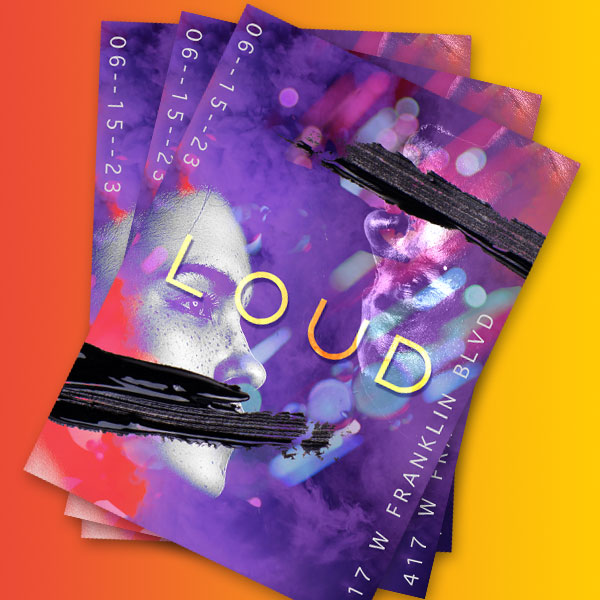
Flyers are a go-to for quick, cost-effective promotion. They are typically single-page and can be distributed in high volumes. Ideal for promoting events, special offers, or new openings, flyers are designed to be eye-catching and to the point, perfect for mass distribution in public venues or door-to-door campaigns.
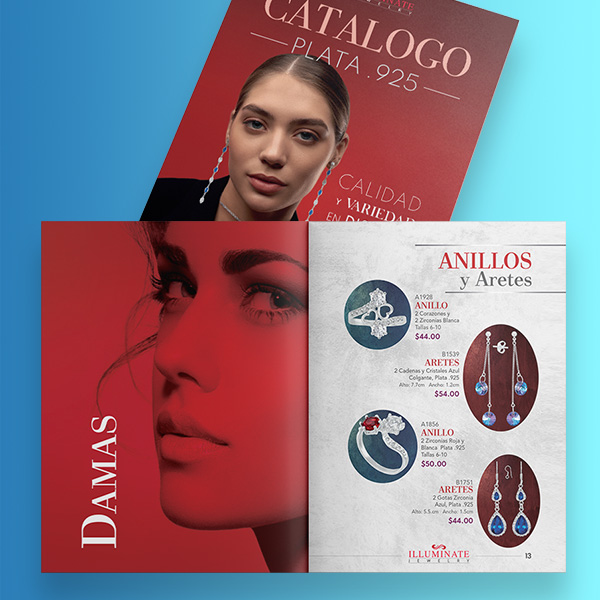
Catalogs are comprehensive print media used to showcase a range of products or services. They provide a tangible way for customers to browse through offerings at their leisure. Catalogs can include detailed descriptions, pricing, and high-quality images, making them valuable for businesses with extensive product lines or for use in showrooms and waiting areas.
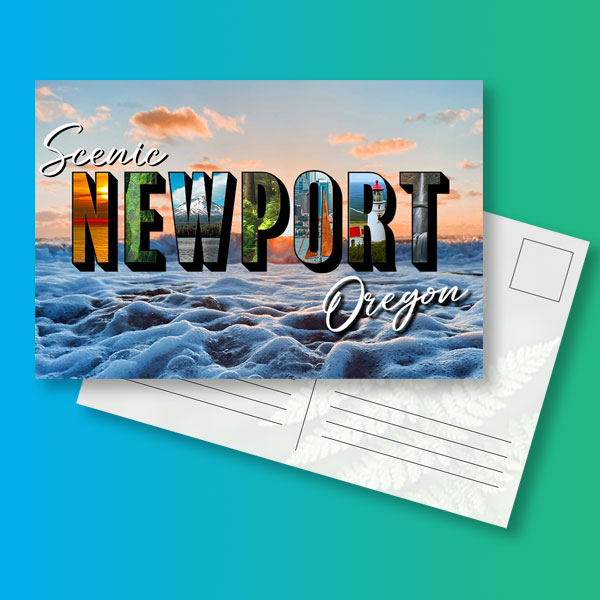
Postcards are a direct marketing tool that can deliver a high-impact message at a relatively low cost. They are ideal for targeted marketing campaigns, such as new product announcements, special offers, or event invitations. Their compact size makes them easy to mail and attractive for recipients, who often appreciate the personal touch of a physical mail piece.
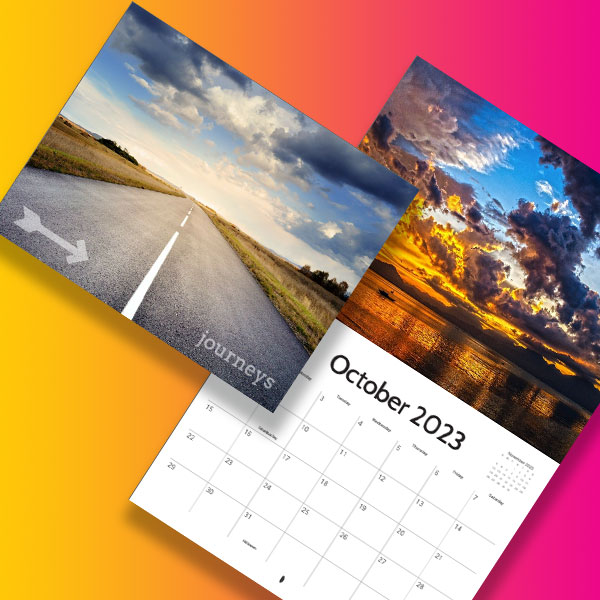
Calendars offer year-round visibility, ensuring that your brand remains in front of your audience daily. Customized calendars can feature your products, services, or key branding elements, making them not just useful for the recipient but also a constant reminder of your business. Additionally, calendars provide ample space for creative designs and can include special dates, offers, or reminders about your business, enhancing customer engagement throughout the year.
Crafting Your Print Marketing Strategy
When integrating print marketing into your broader digital strategy, it’s crucial to create a seamless and synergistic experience. Print marketing should not only coexist with digital efforts but also enhance them. Here are key strategies to ensure that your print and digital marketing efforts complement each other effectively:
- Social Media Integration: Make your print materials a gateway to your digital presence. Include your social media handles and icons on all printed materials, like brochures and posters. Encourage readers to follow your brand on platforms like Instagram, Facebook, or Twitter. This can create a continuous conversation from print to digital, allowing customers to engage with your brand on multiple levels.
- Consistent Branding Across All Channels: Ensure that there is a visual and tonal consistency between your print and digital materials. Use the same color schemes, fonts, and messaging style. This consistency helps in reinforcing your brand identity, making it more recognizable and memorable across different mediums.
- Content Repurposing: Leverage the content you’ve created for digital channels in your print marketing. For example, popular blog posts can be adapted into an informative piece for a direct mail newsletter or a brochure. This not only saves resources but also ensures a unified messaging across all platforms, strengthening your overall marketing narrative.
- Digital Call-to-Actions in Print: Incorporate digital calls-to-action in your print materials. Invite readers to visit a specific webpage, sign up for an online newsletter, or join a virtual event. This creates a direct link between your print and digital assets, driving traffic to your digital channels and increasing overall engagement.
By carefully intertwining these elements, your print marketing can effectively complement and enrich your digital campaigns, creating a holistic marketing approach that leverages the strengths of both mediums.
Benefits of Professional Printing Services
Choosing a professional service like PrintingCenterUSA guarantees high-quality prints that reflect your brand’s professionalism. Our expertise in printing technology ensures vibrant colors, crisp graphics, and durable materials. Plus, our competitive pricing and reliability make us an ideal partner for all your print marketing needs.
The global commercial print market is expected to reach $460.28 billion by 2025, growing at a CAGR of 2%, indicating the continued relevance and growth of professional printing services.
Conclusion
Print marketing remains a vital component of effective advertising strategies. By understanding its benefits, knowing how to implement it, and utilizing professional printing services, you can create compelling, memorable marketing campaigns. Explore our range of services at PrintingCenterUSA, and take the first step towards elevating your print marketing today.

